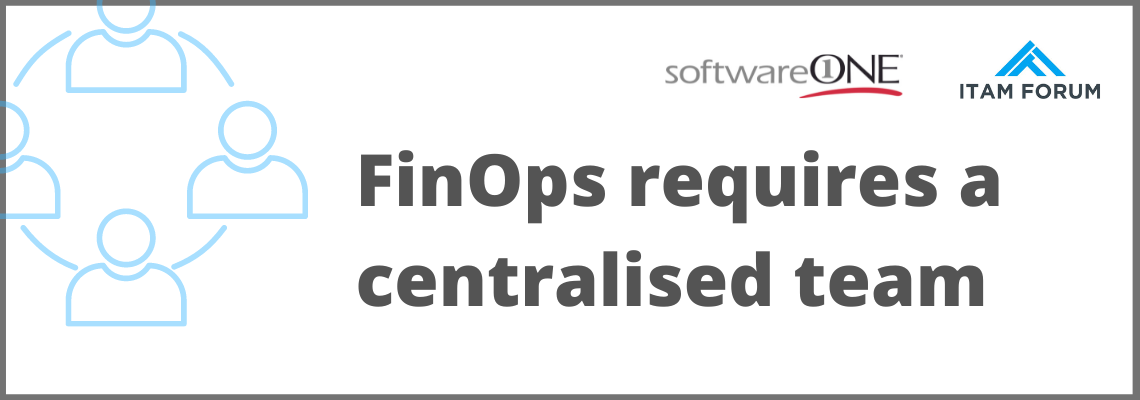This blog is from Dan Ortman, Director of FinOps Services, SoftwareONE (an ITAM Forum Patron). It was first published to the SoftwareOne website.
Watch Dan’s Video: FinOps, an opportunity for ITAM
A cloud financial management or FinOps practice can maximize the value of the cloud. It is a collaborative discipline where all stakeholders take ownership of their cloud usage with support from a central best practices group.
A strong FinOps practice incorporates the 5 Cs of FinOps. The third ‘C’ is ‘centralized team’.
When hearing “centralized team,” leaders may question what implementing FinOps will cost. This is a fair concern. However, every organization will answer differently. For some, FinOps may be a functional role, while others will need a team that is 100% dedicated to the practice.
The common thread is the reach this centralized team will have. It is very uncommon that finance, IT, procurement, DevOps, and SecOps are already on the same page.
In an ideal state, the FinOps team will work with the change sponsors to FinOps across every function. The FinOps team should influence all individuals who spend in the cloud. Depending on the size and complexity of your organization, this may be a long-term goal.
How to Build a Centralized Team
The first step is to hold workshops with stakeholders from different teams to identify gaps in their current strategy and prioritize areas that require attention.
We have interviewed hundreds of people during these workshops and found that respondents, on average, disagree with the answers to 55% of cloud-related questions. It is impossible to succeed with FinOps when groups do not have alignment around the cloud and how it can help them achieve your organization’s goals.
When teams work in silos, they won’t realize the full benefits of the cloud, and the lack a holistic view of your spend and usage makes it impossible to maximize the value of your cloud investments.
Succeeding with cloud financial management requires a centralized FinOps team.
Build a sense of ownership by bringing the following stakeholders together to create a functional FinOps group:
- Cloud vendor or cloud management solution vendor
- Engineering/DevOps
- Executive leaders
- Finance
- IT
- ITAM
- Procurement
You can also bring in FinOps experts to help you establish, manage, and maintain your program without investing in dedicated, full-time employees.
How Many People Should Be on Your FinOps Team?
According to the FinOps Foundation, the average FinOps team has seven people. However, the number isn’t as important as ensuring all your stakeholders have representation.
Every stakeholder should have time to discuss their current and future initiatives. For example, engineers and developers can bring their roadmaps. Then, your FinOps team can help leaders define KPIs based on their business, financial, and technology goals. When everyone aligns around a shared vision, you can communicate more effectively and make FinOps a priority across your organization.
A Cross-Functional FinOps Team is Ideal
A cross-functional FinOps team allows you to create efficient feedback loops and allocate direct and shared costs appropriately. Doing this will give you visibility into your cloud spend and enables variance analysis while holding teams accountable for waste.
For example, you can see if a development team fails to turn off services that are not in use. You can also work with engineering to identify static workloads that would be more cost-effective as reserved instances.

